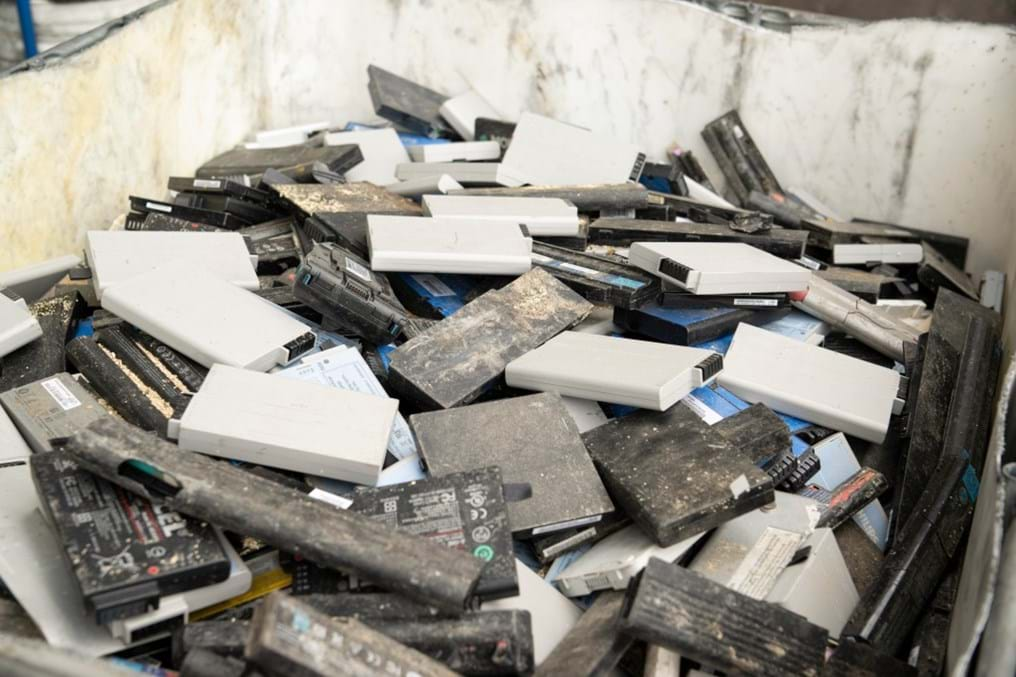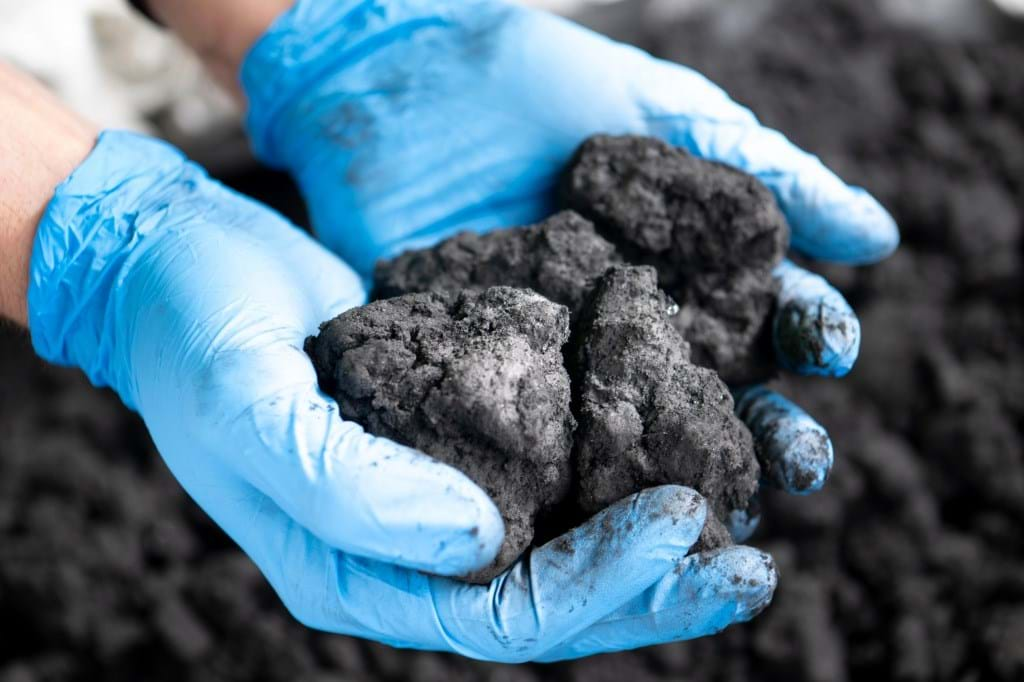Meet a difference maker in…. affordable energy – Sam Haig

3rd August 2022
In this blog series, which is part of our Sustainability Hub, we’re speaking to chemical engineers across the world making a difference to make sustainable practices and products a reality and more accessible to all for the wider benefit of our society and globe.
Here, Sam Haig explains his role in the recycling and recreation of lithium-ion batteries, and why it’s important to improve the process of utilising the materials within them to ensure once a battery reaches the end of its life there is not significant waste harming the environment. He talks about the challenges of these hazardous materials within batteries and handling production in a sustainable way, while demand is ever-increasing.

Name: Sam Haig
Job title and organisation: Battery Recycling Business Manager, RSBruce, UK
IChemE role: Treasurer, North West Members Group
Bio: Sam has worked for RSBruce for three years and before that spent eight years at Axion Recycling in Manchester, UK, where he was Head of Engineering. He is also Treasurer for the North West Members Group, a position he has held for several years.
What size market are you expecting to have in the future regarding lithium-ion batteries? Is it purely electric vehicles?
At present the large incumbent volume of lithium-ion batteries is those from portable electricals such as laptops, mobile phones, and power tools. In total there is probably a little less than 1,000 tonnes of these batteries reaching end of life each year in the UK.
However, by 2030 there could be 500,000 tonnes of lithium-ion batteries from electric vehicles (EVs) reaching end of life and by 2050 this will have grown to over 2m tonnes. These will come from not just electric vehicles but also fork-lift trucks, autonomous robots, and e-scooters to name just a few applications.
Lithium-ion batteries have a finite lifetime; each time the battery is charged or discharged certain irreversible reactions (such as lithium plating or electrolyte decomposition) occur that reduce storage capacity and available power. The rate of this degradation can be increased by factors such as extreme ambient temperatures (high or low), or high charge or discharge rates. Life can be extended by second life applications (for example, stationary storage) but this is only delaying the inevitable; the battery will need recycling eventually.
Switching from our current dependence on fossil fuels to a sustainable energy supply chain using - in part, electric batteries powered by renewable energy sources - is crucial for us to reach global net zero targets. Establishing manufacturing supply chains for these batteries alone is a huge challenge; and it is essential that all the valuable materials that are used in battery systems are recovered at end of life so they can be reused a second and third time. This will require the skills of chemical engineers amongst others to achieve this in a sustainable way.

What are the biggest strategic challenges to the battery recycle concept in a UK market when considering a car’s end of life?
EV battery recycling presents a number of technical challenges and hazards: batteries are large and heavy; operate at high (potentially fatal) voltages; can set on fire if damaged, releasing hazardous gases; and can be difficult to discharge efficiently. Battery packs are also challenging to dismantle – most of this must be done manually by specially-trained staff (of which there is a severe shortage) and is very time-consuming and costly. Battery packs are designed for manufacturing, not for end of life, and new approaches such as cell-to-pack will make this even more difficult. There are currently only a handful of battery recycling facilities being planned in the UK; far short of the amount that will be required for the volumes mentioned above.
Tell us about the UK’s first lithium-ion battery recycling facility; what does this facility aim to achieve and what challenge is it addressing? Is it a purely UK one?
RSBruce’s lithium-ion battery recycling facility in Sheffield meets the challenge of closing the loop of lithium-ion batteries that reach end of life in the UK. It uses a mixture of chemical and physical processing steps to recover the valuable black mass which contains the cobalt, nickel, and of course lithium. The process has safety features to deal with the volatile and hazardous chemicals that can be released during recycling (for example, flammable organics and corrosive hydrogen fluoride).
What was/is your personal involvement in the design/building/running of this facility?
The development of a lithium-ion battery recycling facility is something I have been working on for many years, even while at Axion Recycling. At RSBruce I have been solely responsible for establishing the facility; including process design, safety, installation, commissioning, and process operation. On top of this I am also responsible for environmental compliance and the commercial operation of the process.

What are some of the challenges you’ve experienced setting up this facility or are there opportunities for growth/improvements still to be made?
The process presents many chemical engineering challenges, such as ensuring safe operation in scenarios where hazardous and corrosive chemicals may be generated. Effective scale up of the unit operations from lab to pilot and then commercial scale was crucial and involved combining core chemical engineering principles with other disciplines’ expertise such as mechanical and electrical.
The recycling industry, and lithium-ion battery recycling in particular, is a place where the need to answer the fundamental engineering question of finding solutions that fit technical, practical, safety, environmental, and legislative constraints is as pressing as any other – possibly even more so than any other.
There are still many challenges that need solving and I work in collaboration with RSBruce’s research and development (R&D) team to develop scalable and practical solutions. One challenge I consider very important in lithium-ion battery recycling is developing cost-effective and low-impact methods for recovering lithium. Believe it or not, only a tiny fraction of lithium is recovered at present.
Beyond recycling, there are a host of design challenges that chemical engineers can contribute to, not least making batteries intrinsically safer by using low-hazard and low-flammability components. There is also a great need for engineers who understand manufacturing processes to get the battery production and recycling facilities online as soon as possible.
Finally, let’s tie in what we’ve talked about to the UN Sustainable Development Goals (UN SDGs). Is a recycling facility like yours achieving any of the aims/targets set out in these goals?
Our facility is vital in the sustainable adoption of electric vehicles. Without an efficient end of life solution, EVs will not be a long-term or environmentally sound solution. The facility therefore underpins the Affordable and Clean Energy SDG, as well as the Climate Action SDG.
More broadly, recycling is an important link in the sustainability chain required for the Responsible Consumption and Production SDG.
Visit our Sustainability Hub to learn about others making a difference in our Sustainability success stories. There you can also access a suite of new on-demand training courses and knowledge resources to embed sustainable principles and practices into everyday work and life.